Hiking is one of the most enjoyable ways to spend time outdoors. Whether it’s a local trail closer to home or someplace remote in a new country, hiking offers an incredibly rewarding way to move your body and explore new places while finding peace away from society’s busyness.
Hiking can also be great for your personal well-being, providing both physical and mental benefits. Moving your body outdoors and clearing your mind with the fresh air can do wonders for your own health.
Hiking for beginners can be a little daunting, with many people believing that you need to have a lot of specific gear, knowledge and skills. However, almost everyone can head out on a hike, with some preparation and essential tips. If you’ve always wanted to get into hiking, then this guide to hiking for beginners will cover everything that you need to know. So, what are we waiting for? Let’s get into the top 8 tips now!
1. Leave No Trace Principles
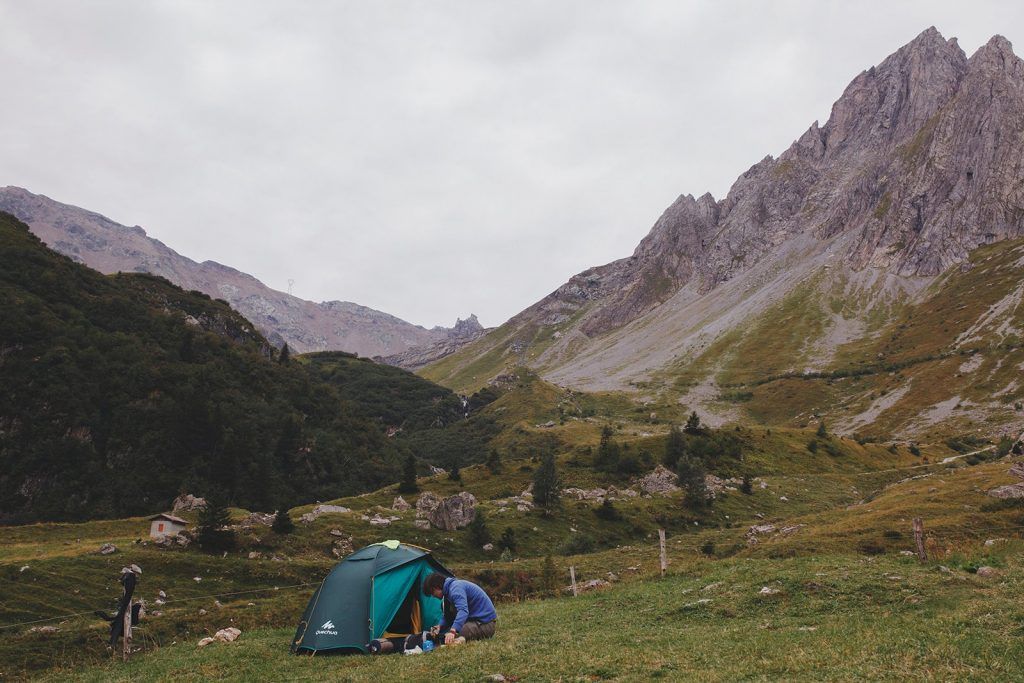
One of the first things to know for all hikers is the Leave No Trace principles. At a basic level, these mean that you should have a minimum impact on the environment while you’re outdoors, including carrying all your rubbish out with you. It’s widely accepted that there are seven principles of Leave No Trace, which should be followed by all hikers, from beginners through to advanced.
The Leave No Trace principles include:
- Plan ahead and prepare
- Travel and camp on durable surfaces
- Dispose of waste properly
- Minimize campfire impacts
- Respect wildlife
- Be considerate of other visitors
- Leave the place the way you found it or better
2. Hiking types
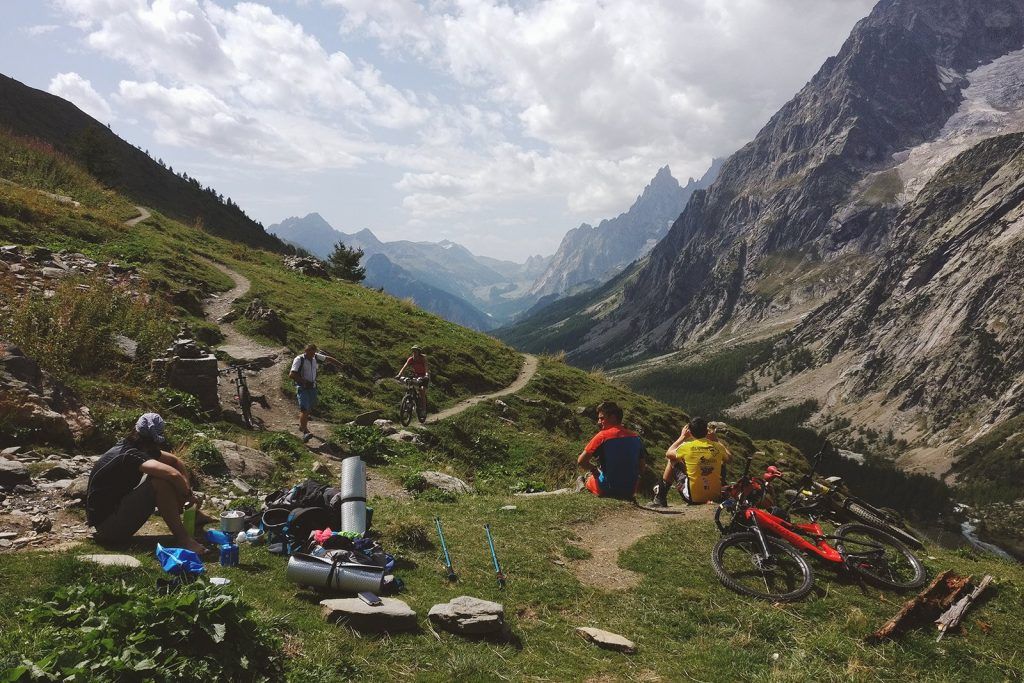
One of the most basic tips for hiking is to understand what type of hike you’re planning to go on. There’s a range of different hiking types with a variety of terms that people use to describe hikes. Understanding this before you’re about to head out, will help you plan and pack accordingly.
For most beginners, day hiking is the best way to get started as it requires only basic hiking essentials and limited skills and knowledge. It’s best to get a few day hikes under your belt before you start to venture into multi-day or overnight hiking. The best way to do it is by going on a few mile hikes around your home or in nearby parks. This will build up stamina and get you used to walking longer distances before heading out for the more difficult hiking trips!
The most common hiking types include:
Day hiking
A day hike is as suggested and is always started and finished within the same day. The difficulty and trail length of day hikes can vary, but the benefit of day hiking is that you only need limited essential gear. Day hikes can also be loop trails or out and back options, which are described further below.
Multi-day hiking or overnight hiking
Multi-day hiking is a hike that takes multiple days to complete. They usually require camping out with more gear and technical knowledge needed. They are best reserved for hikers who have plenty of day hiking experience.
Trekking
Trekking is similar to multi-day hiking but is usually used to refer to longer and tougher trails that might require a team or extensive planning. It’s best for more experienced hikers, who have also done a couple of overnight hikes before.
Thru-hiking
Thru-hiking is a popular American term used to describe a very long trail that takes weeks or even months to complete. They are also usually one-way trails, such as the Appalachian Trail or Pacific Crest Trail. These kinds of trails can also be done in shorter sections, which is often referred to as section hiking.
Backpacking
While in some countries backpacking is often used to refer to young people who travel around the world with a backpack, some also use the word to describe overnight hiking that requires camping and carrying a lot of gear on your back.
Loop or circuit
One of the most common types of trails are loop or circuit trails. This means that they simply start and finish in the same place, forming a loop.
One way hike
The other option for trails is usually one-way hiking or return hikes. This simply means that the trail goes from point A to point B, either finishing at point B or requiring you to return the same way that you came.
Scrambling
Some hikes consist of scrambling which includes some basic and non-technical climbing over rocks and boulders. It can be difficult for beginners and requires good balance and experience.
Mountaineering
Known as the most technical form of hiking, mountaineering requires very specific skills and gear that is not ideal for beginners. Usually, mountaineers have had many years of building knowledge and equipment to summit high mountains. If you’re interested in mountaineering there are basic beginner courses to help you get started. But won’t be covered here.
3. Hiking gear for beginners
 Depending on what kind of hike you plan on heading out on, there’s some basic beginner hiking gear that you should be aware of. For day hikes, you really only need to worry about the essentials for comfort and safety.
Depending on what kind of hike you plan on heading out on, there’s some basic beginner hiking gear that you should be aware of. For day hikes, you really only need to worry about the essentials for comfort and safety.
These essentials include:
- Day pack: A day pack is one of the most essential items as you’ll need this to carry all of your gear with you while you’re out on the trail. It’s best to have a supportive and comfortable day pack that fits your body well and is big enough for the gear you need. You can read more here: what is a daypack and how to choose the correct one.
- First aid kit: As a safety essential, a first aid kit is one thing that you should carry with you on all hikes. A basic first aid kit can either be put together yourself or purchased as a package, but it should always contain basic items like plasters, bandages, antiseptic cream, pain relief medication and alcohol wipes. You should be able to treat everything from blisters to more serious wounds.
- Water bottle and filter: Hydration is an important consideration for hiking, as you need to ensure that you can replace the fluids that you lose through sweat. Carrying sufficient water for your hike requires at least one water bottle or hydration reservoir, depending on what you prefer. If you think you’ll need to refill your water bottle on the trail, it’s also important to carry a filter with you or sterilisation tablets.
- Food: You also need to pack enough energy to get you through a day hike. For beginners, it can be difficult to know how much food to carry, but you will soon learn how to calculate the quantity and work out what kinds of food works best for you. There’s more about this below.
- Sunscreen and sun protection: No matter what time of year, hiking for hours outdoors means that you may be exposed to the harmful sun rays. You should always carry some sun protection including sunscreen, lip balm, a hat, sunglasses and long-sleeved shirt.
- Navigation tools: There are a range of navigation tools available and depending on your skills, you should take at least a couple of different types with you. Most hikers now have GPS devices or a GPS app on their phone with trail information. However, it’s also a good idea to carry a paper map and compass as well, because technology can sometimes fail at unexpected times. There’s more about this below.
- Emergency essentials: For your own safety, there are a few emergency essentials that you should pack into your daypack for a day hike. An emergency blanket or shelter, headlamp, waterproof matches or fire starter and multi-tool are the main hiking essentials that you should carry with you so that you can survive if there’s an emergency.
For a more detailed list, you can read more here: 14 daypack hiking essentials list.
Winter hiking gear
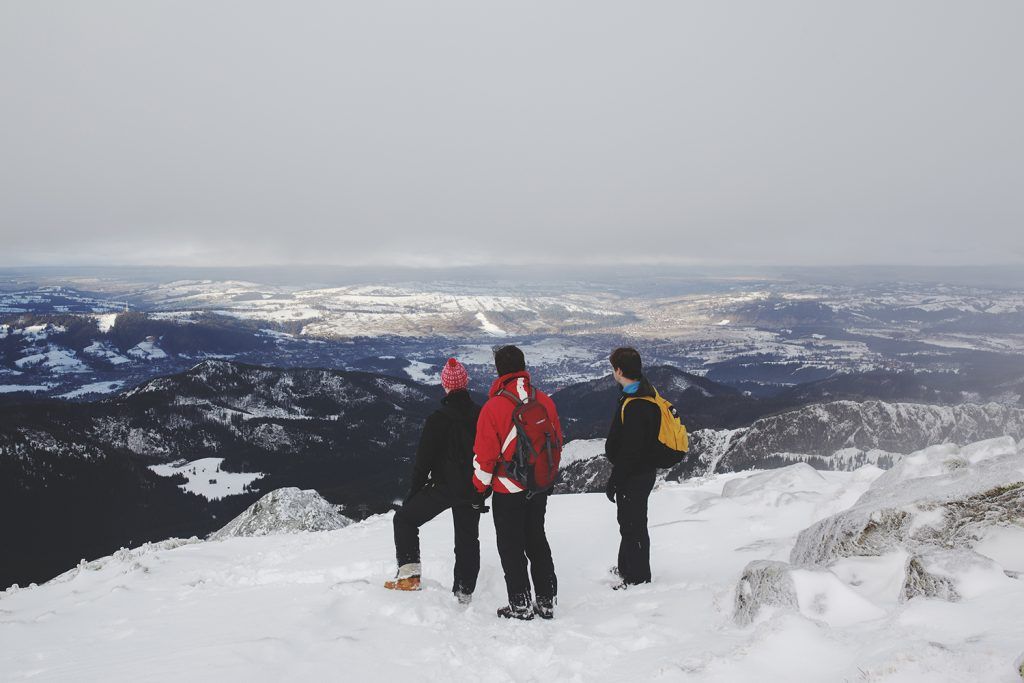
Winter hiking is more complicated, as you also need to consider serious weather conditions including snow and bitter cold temperatures. It’s best to have a bit more experience with day hiking in summer before you attempt hiking in winter. There are a lot more items to add to your hiking gear list as well, including thermal clothing, gloves, a beanie, outer layers and jackets, as well as, crampons and snowshoes if needed. You can read more about winter hiking gear here: ultimate winter hiking gear list.
4. Hiking clothing

On top of your hiking gear, knowing what to wear hiking can be a very daunting task. While there’s plenty of hiking clothing available to purchase, it’s best to understand some basics before heading out to buy some new gear.
Winter vs. summer hiking
It’s a good idea to check the weather report before you head out for your hike. This way you’ll know what kind of temperatures and conditions to expect so you can dress accordingly. You should always prepare for the worst conditions, as the weather can change quickly, especially in mountainous and alpine areas.
What you decide to wear hiking in summer, will obviously be very different to what you should wear in winter. Winter requires more thorough preparation with additional clothing required for warmth and comfort. In short you will have to spend a considerate amount of budget to get all new gear for winter. Starting with socks and finishing with a winter jacket.
Layering system
Most experienced hikers agree that wearing layers is the best way to get dressed for hiking. This way you can peel off layers as you warm up and add them again when you stop or cool down. The layering system works like this:
Base layer: The bottom layer is supposed to sit next to your skin and wick moisture and sweat away. They can be t-shirts or long-sleeved options depending on the season and are ideally best made from merino wool which is a natural, moisture-wicking fabric. However, never wear cotton. It gets wet and heavy quickly and takes ages to dry.
Mid-layer: The middle layer should be looser fitting and sits over the top of your base layer when the weather is cooler. It’s supposed to be insulating and allow air to move through, but at the same time add warmth such as a fleece jacket.
Outer layer: The outer shell is most important for winter hiking and windy and stormy summer seasons, as this layer is usually weather-resistant and worn to block wind and water. Mostly rain jackets or Gore-Tex shells are used as outer layers.
Hiking shoes
Hiking shoes can be a contentious topic amongst hikers. There are plenty of different options including trail runners, hiking boots, hiking shoes and sneakers and everyone has their own preference. While it can be difficult to determine what type of shoes are best for hiking, it’s worth investing a bit of money into purchasing high-quality shoes. They are one of the most important pieces of gear, as they help you walk comfortably without blisters as well as keep you supported on the hiking trail.
However, it’s also common for hikers to have multiple pairs of hiking shoes to suit different trail conditions. If the trail is going to be rough or you’re expecting tough conditions like rain or mud, then it’s best to wear hiking boots that are made from Gore-tex or similar fabric and have ankle support. Otherwise, if you’re going on a dry hike with just a touch of rain, trail runners will often be sufficient and lighter. For beginners, it’s best to head into a store to try shoes on before purchasing as there are many different brands and styles to suit different feet.
5. Food
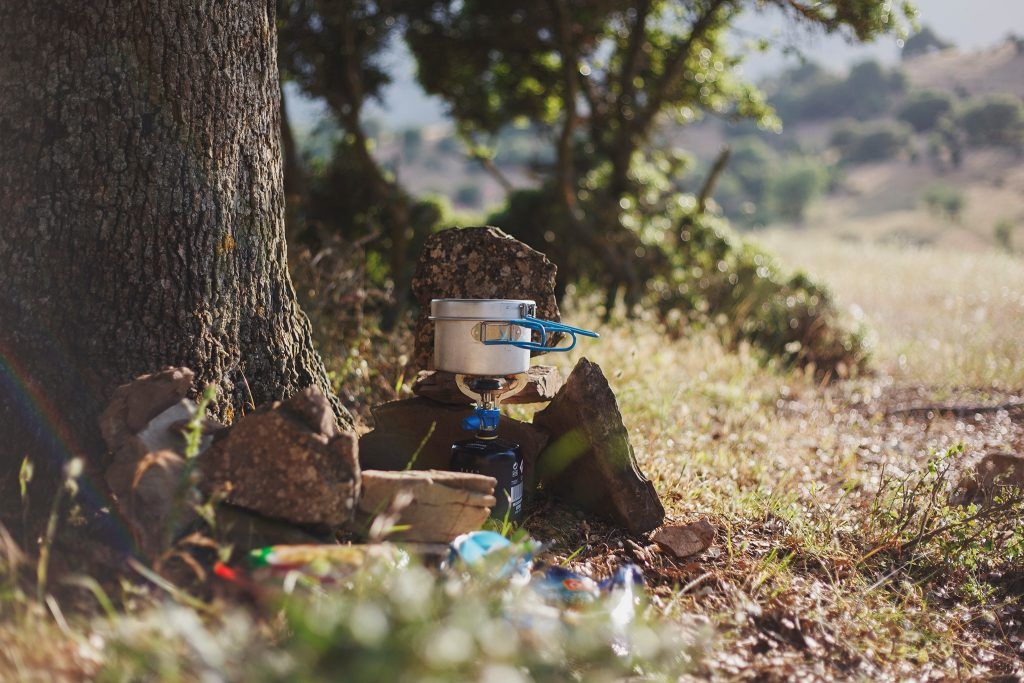
Hiking can be an energy-intensive activity depending on the trail. An average-sized person burns around 370 calories per hour while hiking, depending on the conditions of the trail and the person. This means that you will need to replace some of this energy as you go to ensure that you avoid fatigue. It’s best to carry as much as you need plus extra supply in case the hike is longer than planned.
An important tip for hiking for beginners is to think about energy-dense foods to cut down on pack weight. Good quick energy food for hiking includes muesli bars, trail mix, nuts, jerky, dried fruits, chocolate bars and energy bars.
You may also want to consider an easy-to-pack lunch for day hikes. Sandwiches are one of the easiest options, or you can try wraps or biscuits with dense fillings. However, if you are planning a longer time of hike you might consider getting a primus and cooking some food on the hike.
6. Fitness and mental conditioning
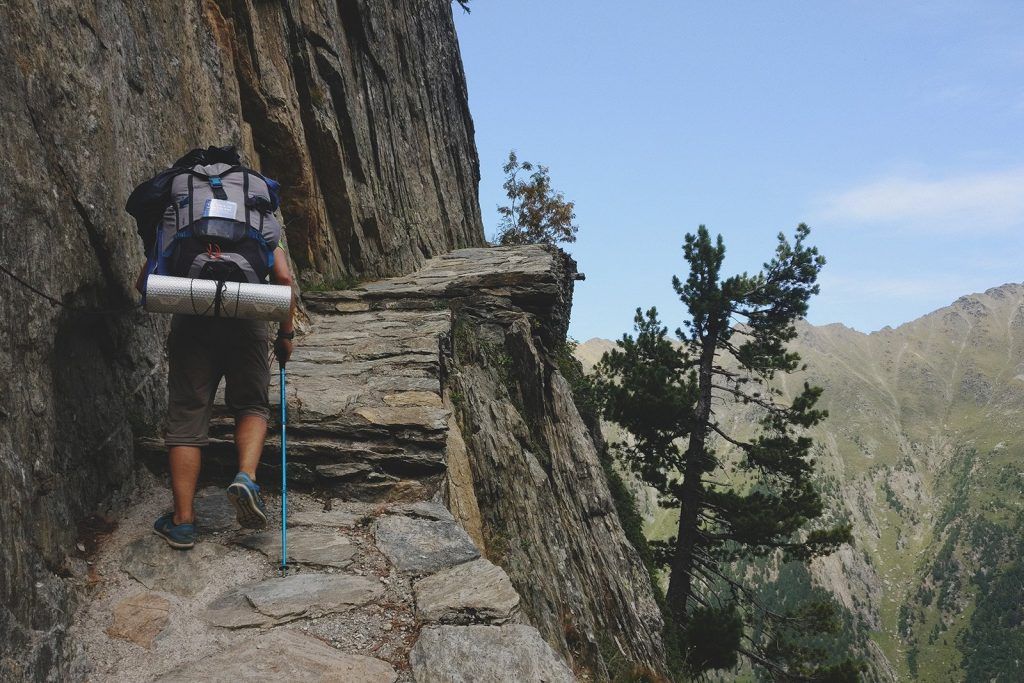
It’s best as a hiking beginner to start out small and choose trails that are suited to your own fitness level. Starting out with something rated easy or a short hike is a good idea to assess how you feel on your feet over many miles. Day hikes can be anywhere from a few miles up to 30, so it’s ideal if you can start low and build up to something longer.
There are a couple of things to consider when thinking about your hiking fitness. The first is how long you can spend on your feet. Walking between three and five hours is considered a standard day hike and for anyone who has never spent that long on their feet, this can be challenging. The more you walk and build up distances the better you will feel on longer hikes. The second thing to consider is your lung capacity. You will notice this mostly on trails that have a decent elevation gain. The more cardio activity and the more hills you hike, the more you will build this up and be able to breathe easier as you walk. Like any physical activity, fitness and endurance is something that takes time.
Hiking can also be a challenging mental battle at times. Anyone who hikes for long distances will get tired, wet, cold, hurt or miserable at some point and this requires some tough mental conditioning to push through. While building up your mental toughness can be difficult, the more hiking experience that you have the better you will be at dealing with these emotions and tough situations. As a beginner, this is another reason why starting small is a good idea, as you will gain more experience over time.
7. Planning

Planning is one of the most important parts of hiking, as this is when you must decide on trail type, distance, location, season and other logistics. While many of the above tips, including food, gear, and fitness, are all a major part of preparing, planning your day out as much as possible can save you from a lot of unexpected encounters.
Beginners should only do something that is within their comfort zone, which means picking a trail and distance that you know you will be able to comfortably complete. It can be difficult to know how long a hike will take, especially if you’re unsure how much distance you can cover. However, most hikers average around 3km per hour, which includes a short break. You should try to allow enough time to get back to the trailhead well before sunset, with some extra daylight hours up your sleeve in case the hike takes longer than planned.
It’s also important to know as much information about the trail and hike as possible. You should try to read about the type of terrain, weather, elevation and distance that you plan on covering. This way you’ll be more prepared for what you’ll likely face, and you can pack clothing and gear accordingly.
A good last-minute checklist before you head out should include:
- Check the weather forecast for the most likely conditions.
- Verify recent trail conditions such as snow or track closures, which can usually be found on national park websites.
- Leave a copy of your itinerary with a friend or family member and tell them what your plans are before leaving.
- Double-check your gear and make sure that you have everything that you need.
8. Navigation
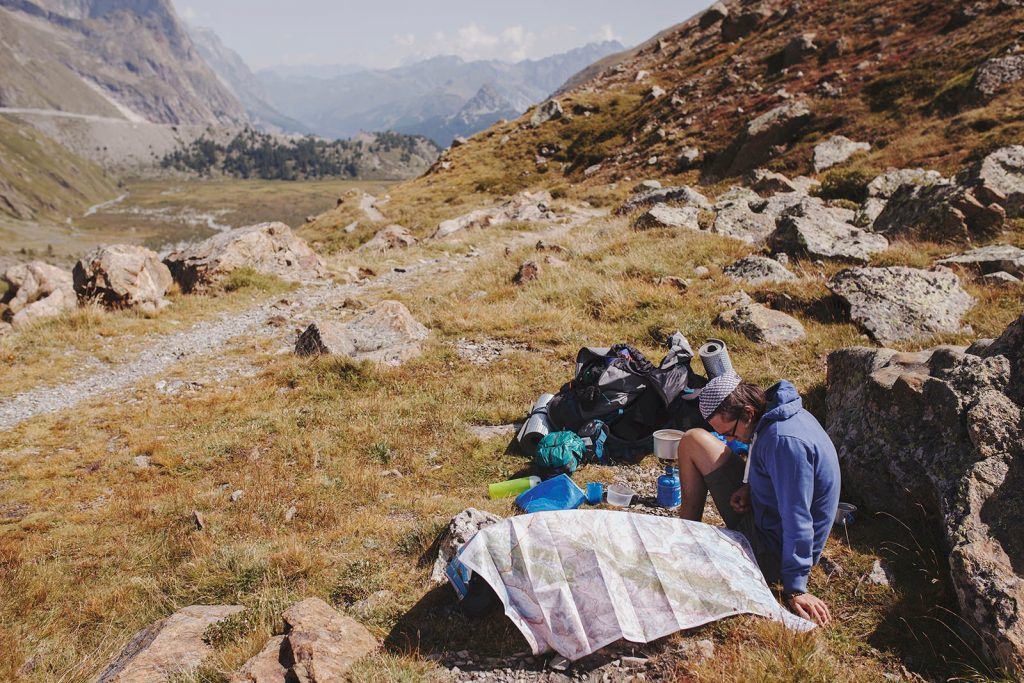
Finding your way on a trail can be one of the most daunting parts of hiking for beginners. While some trails are well-worn with good signage, others may not be so easy to follow. You should always carry more than one navigation tool with you, to make sure that you don’t get lost in case the trail is not as obvious.
GPS devices and cell phone apps
Many state park and national park websites will have basic maps and information on trails. However, these are usually not overly detailed and usually require you to have another GPS system. There are dedicated GPS devices from brands like Garmin, which are very useful for hiking. However, most beginners tend to start off with simply using their mobile phone with a hiking or map app.
While there are a few apps available, AllTrails is one of the most commonly used and has plenty of information and reviews about all different hikes.
Paper maps and compass
On top of using your mobile, you should always carry a map and compass as a backup navigation system. There’s always a chance that technology will fail or you may run out of battery. This means that you need to know how to actually read a topographic map and use a compass, which are both skills that are necessary for any remote or backcountry hikes.
You can check out some online resources, such as REI’s beginner’s guides for how to read a topo map and how to use a compass. Otherwise, if you plan on getting into hiking seriously, then you can also take in-person courses over a couple of days where you can learn from instructors.
9. Bonus section: extra tips
How to find friends to go hiking with
If hiking is completely new to you, you may not always have friends to go hiking with. However, as a beginner hiker, it’s a nice idea to head out on a trail with someone so that you can gain some experience without having to be alone. Some of the best ways to meet new hikers include:
- Local meetups and walking groups in your town or area
- Hiking groups on Facebook
- Join a guided hike with an outdoor company
Hiking with dogs
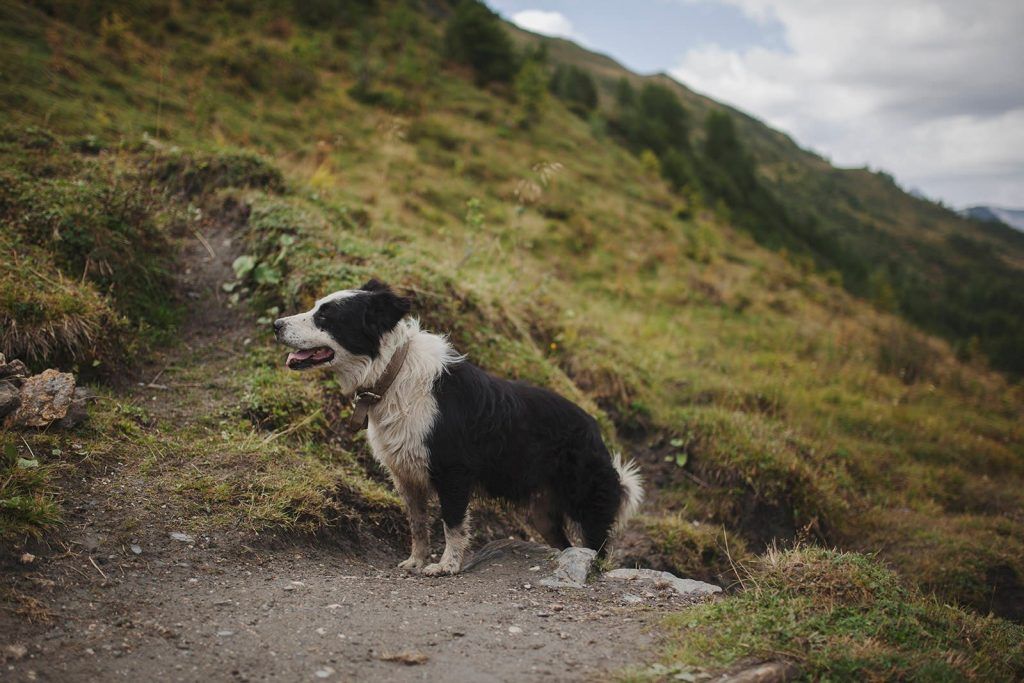
Going for a hike with your four-legged friend can be a great bonding exercise as well as motivation to get you outdoors. While some national park trails restrict access to dogs, you will usually find plenty of dog-friendly trails in and around where you live. You should be aware that some parks have rules for pets, including keeping them on a leash at all times and cleaning up after them. This is all part of the Leave No Trace principles mentioned above.
Hiking etiquette
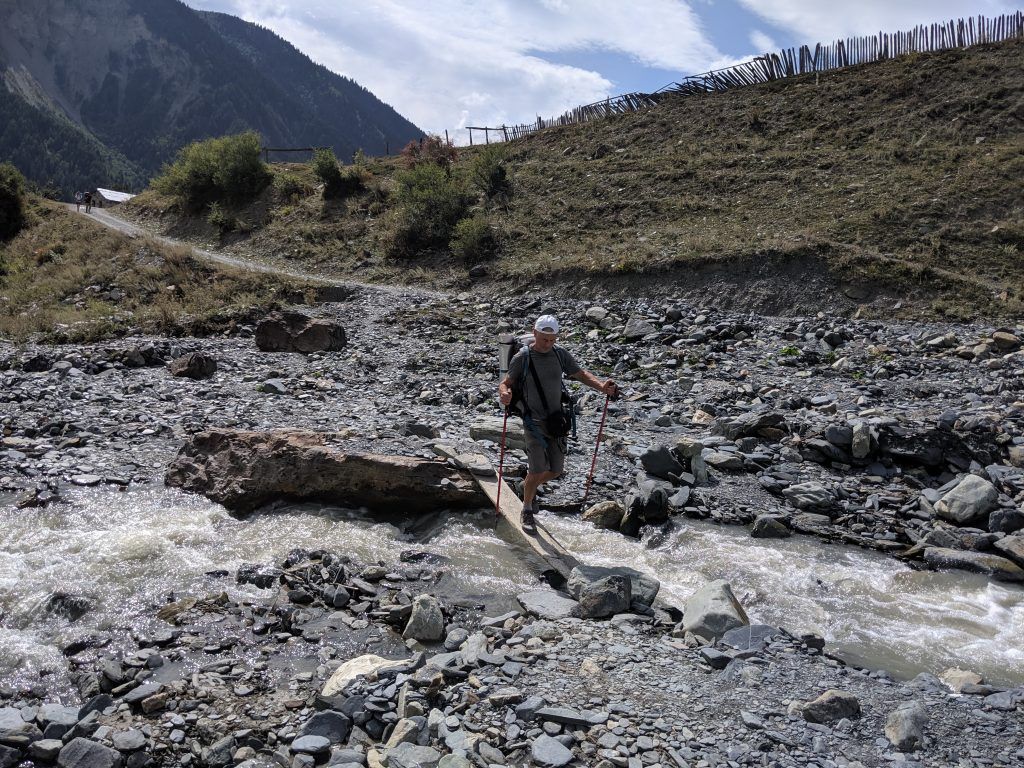
While there are no official rules for hiking, there is some common etiquette that is observed by most hikers.
Proper trail etiquette usually means giving uphill hikers the right of way. This means that if you’re coming downhill on a skinny trail, you should stop and allow uphill hikers to pass. This acknowledges that uphill hikers are working harder and require a bit more momentum to keep going.
Another aspect of trail etiquette is when you’re sharing the path with bikers or horse riders. You should be aware of both if you’re using a shared trail, as it can be quite dangerous if a collision occurs. Technically, it’s safer if hikers allow horse riders to pass, as horses can be spooked easily. On the other hand, cyclists are meant to be aware of hikers on trails, although their high speeds can often make this difficult. Try to stay to one side of the trail if you see bikers coming and allow them to pass by safely.
Conclusion
If you’re planning your first hike, I hope these tips help you ensure that you’re well prepared and ready to hit the trail safely. Hiking is one of the most rewarding activities and it can be enjoyed by almost anyone who is willing to give it a try


[…] 8 Essential Hiking Tips For Beginners […]